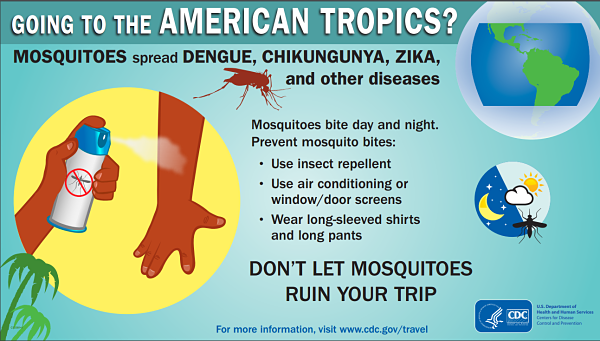Zika – What Are the Real Lessons from Ebola?
Anyone following the international media over the last few days might be forgiven a strong sense of déjà vu about the outbreak of the Zika virus in the Americas. The World Health Organization issues panicky statements and goes into huddles with the smug leaders of major research organizations and some technophile philanthropists. The world is meant to be impressed with the ability of biomedical science to solve this problem, provided enough money is thrown at it. Unfortunately, it is also rather clear that biomedical science does not have much idea where to start.
Unlike Ebola, which has long been seen as a potential global threat to the developed world, Zika has only affected a small number of black people in a rather minor way. While it may have been identified in the 1940s, very little is known about the virus and it would be a remarkable chance if an existing therapy or platform proved to be useful. Nevertheless, there is increasingly persuasive evidence that the strain now affecting parts of the Americas is likely to be responsible for the biggest wave of birth defects since the thalidomide tragedy of the 1960s. What can be done? Can we have any confidence that it will be done?
Readers of this blog will know that it has been strongly critical of the neglect of the social sciences in the management of the Ebola outbreak in West Africa. This is not just my judgment but also that of the WHO’s own review panel.
It is clearly a defect that has still not been corrected in Sierra Leone. The day after WHO declared the outbreak over, a new death was reported. The Reuters account describes how the victim was treated by a health worker who did not wear protective equipment, samples were not tested for the virus, and the corpse was washed by traditional attendants. Reuters note that, “Information campaigns calling upon residents of Ebola-affected countries to respect government health directives have been largely credited with turning the tide of the epidemic.” However, these campaigns have clearly not been sufficiently sustained or embedded to prevent these sorts of system failure. The creation of local testing laboratories and the trials of vaccines seem to have diverted attention from the need to maintain organizational and public engagement with the social practices that actually beat the disease.
What do we find with Zika? The same massive focus on vaccine development with some advice on personal protection. Wear long sleeves and use a lot of mosquito repellent – in countries where the temperature can exceed 40°C and many citizens struggle to earn enough to eat, let alone buy effective repellents. Avoid becoming pregnant – in countries where there is limited access to any form of contraception and, often, cultures of machismo that make it difficult for women to resist unprotected sex, even if condoms are available and affordable. If your baby has a seriously disabling birth defect, you can’t choose to do anything about that because most of the Americas severely restrict access to pregnancy termination. Once you have the baby, you are, of course, largely on your own because most of these countries also have fairly minimal welfare states. Clean up your neighborhood. Suppose you do pile up the rubbish – will the local government take it away? Will they level the potholes that collect the puddles that mosquitoes breed in? Cover the open sewers? Seal the water tanks?
There are things that can be done to control Zika. At this stage, though, biomedical research is just smoke and mirrors, and about as useful. This is not an argument against a long-term scientific program. However, it must not be allowed to distract from the way in which the Zika epidemic is a product of the social and cultural choices made by the societies of the Americas. It is very like the challenge of cholera that drove reform in 19th century Britain, when the health of the rich was seen to be clearly interwoven with the health of the poor. The rich of the Americas haven’t needed to worry about the public water supply when they can drink clean water from a bottle. It is much harder to escape the mosquito’s bite. Zika exposes the consequences of the corruption, racism and neglect that are intrinsic to the gross inequalities of so many of these nations.
The response to Zika needs to engage with the reproductive rights of women, with the ineffectiveness of governments, and with the housing and sanitary conditions in which poor people live. WHO is a creature of the governments that pay its bills and many of the other policy actors are either locked into biomedical research and service provision or equally dependent on the goodwill of the states that have failed here. As has so often been pointed out by the social sciences, pills may patch up individuals but they are also a convenient distraction from the social structures that shape the health of populations. A narrow focus on discovering biomedical interventions to treat Zika will condemn many poor people, and their children, to avoidable suffering. Who will speak for them?
































































































